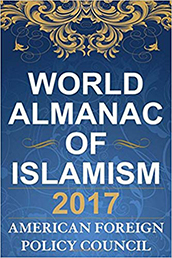China Reform Monitor: No. 1310
Chinese spies set their sights on Germany;
New modes of surveillance hit Xinjiang
Chinese spies set their sights on Germany;
New modes of surveillance hit Xinjiang
No more foreign eyes on Russia's legislature;
Russia banned from 2018 Games
Anyone hoping to leave the turbulence of 2017 in the past will be in for a rude awakening. While we can’t know for certain what will unfold in the year to come, observable trends in several countries, including the U.S., give us a glimpse of what to expect in 2018.
Could we see a new Iranian revolution in 2018? For nearly a week now, tens of thousands of Iranians have taken to the streets in various cities throughout the Islamic Republic in the largest mass demonstrations of their kind in nearly a decade. In the process, they have raised the tantalizing possibility that we might in fact be witnessing a second "Persian Spring."

Now in its third edition, The World Almanac of Islamism is the first comprehensive reference work to detail the current activities of radical Islamist movements worldwide.